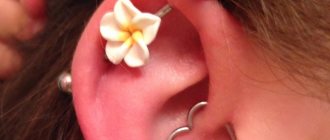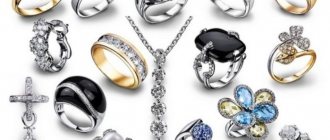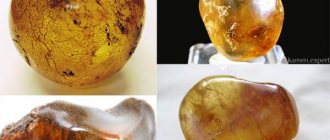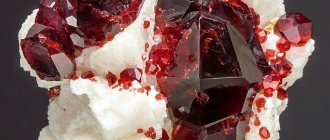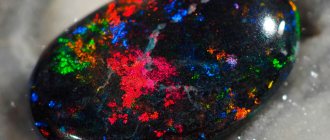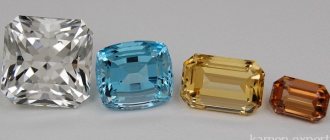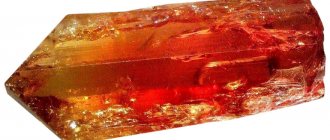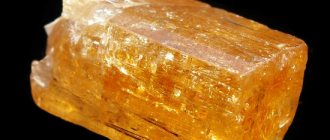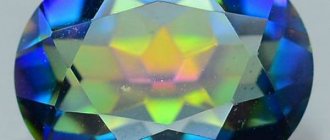Colors and types of stone
Topaz colors can be varied and have different occurrences in nature and value. In addition, topaz is characterized by pleochroism, from weak to strong, depending on the intensity of the color.
Red
Red is one of the most sought after and valuable topaz colors. Less than a percent of the total amount of mined raw materials goes into cutting. Red can be not only the main tone of topaz, but also one of the colors of pleochroism.
For example, in some orange and yellow stones cut into an elongated pear or oval shape, it appears as an additional shade.
In the photo: red topazes of elongated oval and pear shapes
Pink
Pink topaz is very rare, it resembles the color of a fancy diamond and pink sapphire. However, it is much cheaper than these varieties.
Orange
Orange is also one of the noble varieties. Sometimes it has a slight pink tint, so it looks like a padparadscha sapphire.
If the color is very bright, neon, and the cost is relatively low, most likely you are looking at topaz with a painted film applied (Coated topaz).
Yellow
Yellow and golden colors are more common and come mainly from the mines of Brazil. The fact that demand for it slightly exceeds supply makes it more affordable compared to red and pink varieties.
Wine
Tan, tan, and brown colors are often called wine or tea colors. These shades are not stable, they tend to fade in the sun, so their cost is low.
In the photo: wine topaz crystals in the sun
Light blue and blue
Blue and blue topazes are the most common colors of topaz in jewelry. Their popularity is due to their beauty, hardness and the ability to produce a blue color on a large scale. It should be borne in mind that 99 percent of all blue topazes have been refined.
In the photo: untreated (non-irradiated) blue topazes
Colorless (white)
Colorless (white) topazes are mined in many deposits and often serve as the starting material for the subsequent production of blue color. In the Asian cut, colorless topazes do not look attractive, but when cut in compliance with the required proportions, with high-quality polishing, they are very beautiful.
Green
A very rare color for this mineral, the color is not pronounced, muted. As a rule, the greenish color is obtained by superimposing blue and yellow-brown color zones in one stone.
Be careful with stones of a pronounced green color; in most cases these are film-coated topazes.
Two-color
Sometimes one copy contains two colors at the same time. For example, blue and golden brown. If such a crystal is correctly oriented and arranged with the correct arrangement of edges, the cut stone will have a collection value.
Such topazes often come to market in the Volyn deposit, Ukraine.
In the photo: two-color topaz from Volyn, Ukraine
Caring for products with cubic zirconia
To maintain their original condition, cubic zirconia requires regular maintenance:
- Cleaning stones. It is recommended to clean cubic zirconia with a small brush using a soap solution and warm water. It is important to note that when cleaning and other labor tasks, as well as procedures for applying makeup and other tasks, jewelry with cubic zirconia must be removed to avoid tarnishing of the crystal.
- Cleaning the frame. Cubic zirconias are used to decorate gold, silver and platinum jewelry. The frames listed are rarely subject to scratches or discoloration. Gold, silver and platinum jewelry with cubic zirconia can be cleaned using a special jewelry cleaner. Often gold and silver jewelry is coated with protective metals. In this case, the product must be cleaned using a brush and soap solution, and after the procedure, the product must be wiped dry.
This is interesting! Pendants made of precious metals with emeralds
PURITY
Topazes of all colors, except blue and colorless, according to the GIA classification of clarity of jewelry stones, belong to type II, usually with inclusions. When extracted, crystals, as a rule, contain mineral, gas-liquid inclusions, etching channels, and others.
Some crystals contain needle-like yellow-brown inclusions that can be mistaken for rutile, but when tested they may be channels filled with limonite.
As a rule, crystals of raw materials free from defects are selected for cutting. Therefore, when cut, topazes are often free of visible inclusions or imperfections. This is especially true for blue, colorless and yellow topaz, which are more common than pink and red.
In the case of the latter, about 1 percent of the extracted raw material is suitable for cutting.
CUT
Since topaz crystals coming from deposits often have a prismatic appearance, valuable varieties are cut in the form of elongated pears, elongated ovals, and baguettes in order to preserve the mass of raw materials as much as possible. Due to their rarity, pink, yellow, red, and orange topazes are practically not cut in standard sizes.
Colorless, light blue and indigo topazes are cut in a variety of shapes, from classic to fancy. Raw materials are common and inexpensive, crystals can reach large sizes and there is no need to “save” to save mass. This allows cutters to get creative and use their imagination.
The market offers a wide range of sizes of these varieties, from a few millimeters to large interior specimens, both calibrated stones and individual ones. We list the main cut shapes: oval, circle, cushion, trillion, radiant, octagon, heart, baguette, square, marquise, pear.
In the photo: yellow oval-cut topazes
White and blue topazes are sometimes found in the form of sprinkles, but it is worth considering that the cost of cutting work is much higher than the cost of raw materials and they are not used for exclusive jewelry.
Who is it suitable for?
- Diplomats.
- Missionaries.
- Psychologists, criminologists.
- To hypnotists.
- Managers of any rank.
- Show business workers.
Zodiac signs
- Leo of the third decade is your birthstone.
- Polychrome crystals can be worn by representatives of the entire zodiac circle.
- Yellow topaz is suitable for Scorpios. It will strengthen the body's defenses and support it in moments of testing.
- Blue crystals are good for Cancers.
- Pisces are not advised to wear the stone: topaz jewelry will reveal Pisces’ secret connections.
- Sagittarius and Virgo can wear blue topaz.
Astromineralogists do not recommend wearing “heavy weights” to Taurus and Libra. They say he will upset their usual happiness (whatever that means).
Expert opinion
Semenishcheva Polina
Specialist in mineralogy. Graduated from St. Petersburg Mining University.
Interesting : in India, astrologers believed that Virgos should wear topazes only in sunny weather. Rain and sun stone do not go together.
Is Topaz right for you?
Not really
Element
Air
Earth
Water
Fire
Planets
Saturn
Pluto
Energy
Jan
Can topaz be considered a gemstone?
If we approach this stone from a legal point of view, topaz is not included in the list of precious stones and can conditionally be called semi-precious. From the point of view generally accepted in international gemological practice, topaz is considered to be a precious stone.
According to the classification of Melnikov E.P. Imperial topaz belongs to the II order jewelry stones, blue, white and wine varieties belong to the III order jewelry stones. We talk about classifications in this article.
Durability.
Cubic zirconia is relatively hard and scores 8.5 on the Mohs Hardness Scale.
But in terms of durability, it is far from a diamond (diamond is rated 10 on the Mohs Hardness Scale). This means that cubic zirconia is easier to damage than diamond.
White topaz is close to cubic zirconia in terms of hardness (8 on the Mohs Hardness Scale), but it is softer.
In principle, none of these stones are comparable in strength to a real diamond. However, unlike cubic zirconia, white topaz is easier to scratch or break, and its color is more strongly affected by high temperatures.
In general, if durability is important to you in a stone, the best choice is cubic zirconia; it will serve you much longer and its edges will not wear off as quickly as happens with white topaz.
How to distinguish topaz from a fake?
This gemstone is very popular, so you can encounter imitations or fakes, especially with regard to noble valuable varieties.
Glass is a traditional substance used to create imitation gemstones. Bolle's modern and technological variation is glass ceramic. The properties of glass make it possible to obtain a variety of colors, so many jewelry stones can be counterfeited with it. What this material produces are streaks (inhomogeneity of color, swirling color zones), bubbles, round and comma-shaped, sometimes quite large, visible to the naked eye. When studied with a polariscope, the observation pattern will correspond to an isotropic material or anomalous anisotropy.
It is interesting that a method for obtaining the mineral in laboratory conditions has been developed, but due to the high cost of the work, it is not used in practice for the manufacture of jewelry inserts.
The noble yellow and reddish varieties of topaz are similar to minerals such as spodumene (a variety of triphan), zircon, tourmaline, citrine, sapphire, and heliodor. Zircons are distinguished by a bright dispersion, which is not characteristic of topaz. Spodumene has less pronounced pleochroism. One of the diagnostic methods that allows you to determine topaz with high accuracy is observing the refractive index in a refractometer.
For yellow topaz it is 1.61-1.62, for red and pink varieties it is slightly higher than 1.63-1.64. For citrine, which belongs to quartz, it is significantly lower than 1.54-1.55, for sapphire (the mineral corundum) it is higher and amounts to 1.76-1.77.
However, we note that the listed methods require skills in working with gemological instruments and specialized knowledge.
The most reliable way to confirm the natural origin of a gemstone is to contact an independent gemological laboratory.
Here are examples of expert opinions on natural topaz.
It should be noted that sometimes topaz is used as an imitation of more expensive precious stones: sapphire, diamond. There are known cases when unscrupulous traders mixed topaz crystals processed in the octahedral shape, characteristic of natural diamonds, into the raw diamond deposit. Also, if the raw material was processed in the form of colorless pebbles, other uncolored minerals (for example, quartz or zircon), as well as glass and even plastic, may accidentally appear among the topaz. Therefore, you need to check every stone!
If you like this stone, you can choose and buy topaz in the catalog. If you have any questions about this guide, please email us.
Signs of a natural mineral
True blue topaz is characterized by a number of characteristics:
These tips are designed to help you determine the authenticity yourself at home, but only a jeweler will surely know how to distinguish a natural gem from a fake.
When purchasing, do not neglect the advice of a specialist. An obvious sign of a fake is a low price.
Sometimes blue crystals themselves can be an imitation of more expensive stones. They are sold as sapphires and aquamarines. In the first case, hardness is assessed (for topaz it is less than for sapphire), the refractive index of light and specific gravity. You can distinguish a stone from aquamarine by its stronger shine and play of colors. In addition, aquamarine has a silvery sheen that topaz does not have.

